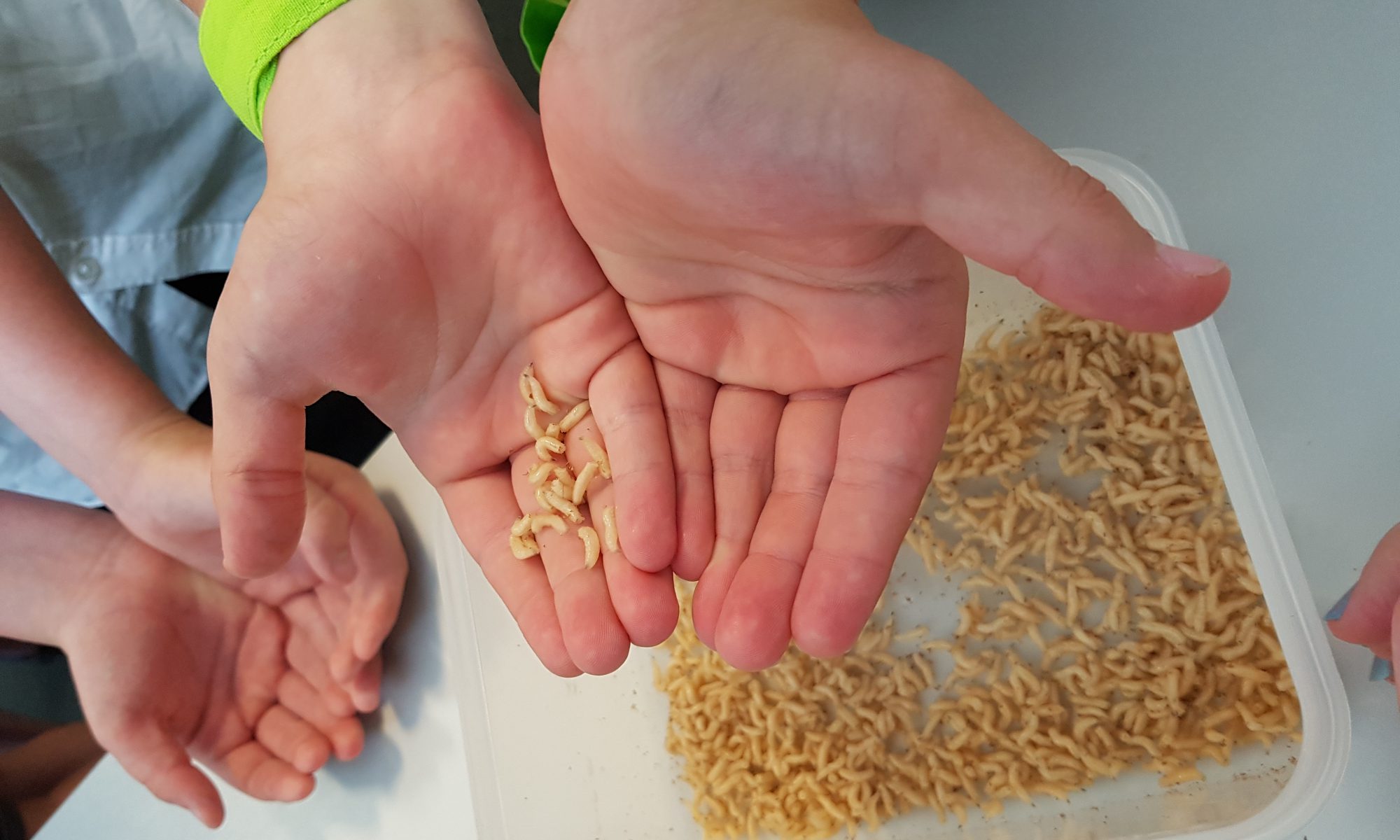Unique Ways Insects Help Humans
Unique Ways Insects Help Humans
As discussed in my previous blogs, insects play a massive role in not only the environment but human economies and cultures. They are found nearly everywhere on Earth, and they offer a diverse range of services that influence the world around them. However, there are other less-known ways that insects can be used; for example, insects can be used in the forensic world to identify the time of death based on the stages of growth. They can also be used for medical purposes, act as sanitarians, and inventions.
 |
| "Picasso Bug" (Alandmanson) |
Insects in Forensics
Insects can be used for forensics, which is a relatively new science and is still being researched to find the full potential of the use of insects.
When a human dies, there is a possibility that their bodies will get infested with insects, especially if their place of death is outside. Using this knowledge, scientists can study the larval stage of the insects, and depending on how old they are, they can get a rough estimate of when the person died. It isn't foolproof, but it gives forensic analysts an idea of when the time of death occurred.
This can be shown through a study done by scientists; they conducted a study over 900 insect-related cases dating from 2001-2019. "Overall, a total of 55 insect species were found. Information on biology, activity, and distribution of the most abundant taxa is given and applied for 5 case histories estimating different PMImins of up to over 6 months" (Lutz et. al, 2021). The insects can also give the investigators a clue about whether the body was manipulated or relocated, based on the species found in the area.
While this field of science is not fully understood and widely used, it has the potential to be an effective tool to help victims.
 |
| Number of bodies found infested with insects (Lutz et. al, 2021) |
Medical Uses
Entomotherapy, the use of insects for medical purposes, has been used for centuries in many cultures, to treat and even disinfect wounds. Records show they are most commonly used to treat skin and digestive disorders.
According to the National Library of Medicine, insects are rich sources of bioactive compounds such as anti-inflammatory, anti-microbial, antiviral, and more. The first recorded use of insects for medicine dates back to at least 3000 years in China with the use of silkworms and honeybees. In 17th-century Europe, it was commonly believed that insects could be used to treat common complications such as epilepsy, earaches, rheumatism, and anemia. Modern medicine can unlock even more uses; like said above, they can help treat skin and digestive issues, but they can also affect the nervous system, and mental health disorders, inhibit infectious and parasitic diseases, and more.
They are also very useful for research; because they have organ systems that are similar to vertebrates, insects are used as models to learn about human organs and functions. "Somatostatin in humans is found to have a similar structure to the corresponding structures in insects, with similar inhibitory effects on the tissues. This could help understand growth in humans, as well as the development of new ligands to treat endocrine disorders such as Cushing’s disease or acromegaly" (Thomas, 2021). The ability to study insects and their medical potential could unlock many new paths for research and treatment.
 |
| Maggot therapy (Swansea University/Y. Nigam) |
Influence in Inventions
Studying insect anatomy and their behavior can also help people create inventions of their own! Because insects are so unique and act much differently than mammals, there is a lot we can learn from them. "Thanks to the observations of vespid wasps, we have the modern pulp and paper industry, which began in 1719 due to the persistence of French naturalist and physicist Antoine Ferchault Réamur" (Eaton, 2019). This is due to its cog-like "gears" in its nymph stage.
He also says that chainsaws were upgraded when Joe Cox of Portland, Oregon watched the "ponderous borer" with its mandibles, which were highly effective in cutting wood with their back-and-forth action, which caused him to devise a "left and right" cutting action.
We can also look at the anatomy of insect and learn from their complex biology. The eyes and brains of dragonflies have been tracked to enhance visual trackers and software. Insects are incredibly complex and diverse animals and the more we study them, the more we find ourselves taking inspiration from them.
References:
MD, Dr Liji Thomas. “Insects in Medicine.” News-Medical, 11 Dec. 2021, https://www.news-medical.net/health/Insects-in-Medicine.aspx.
Siddiqui, Shahida Anusha, et al. “Unravelling the Potential of Insects for Medicinal Purposes – A Comprehensive Review.” Heliyon, vol. 9, no. 5, Apr. 2023, p. e15938. PubMed Central, https://doi.org/10.1016/j.heliyon.2023.e15938.
Today, Entomology. “You Can Thank Insects for Many Human Inventions.” Entomology Today, 16 July 2019, http://entomologytoday.org/2019/07/16/you-can-thank-insects-for-many-human-inventions/.
Lutz, L., Zehner, R., Verhoff, M.A. et al. It is all about the insects: a retrospective on 20 years of forensic entomology highlights the importance of insects in legal investigations. Int J Legal Med 135, 2637–2651 (2021). https://doi-org.ezp3.lib.umn.edu/10.1007/s00414-021-02628-6
Comments
Post a Comment